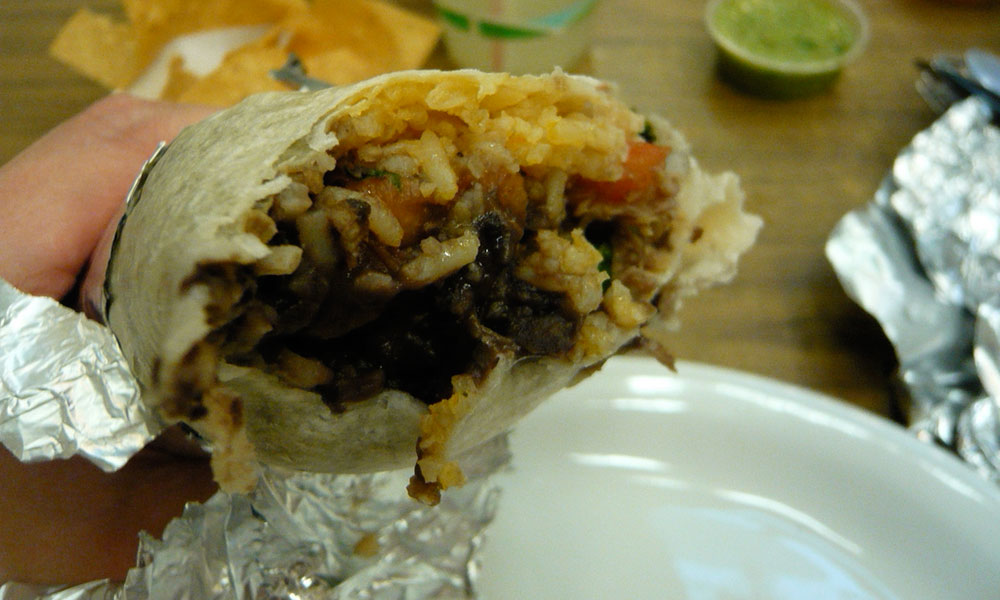
Free Burritos! … And Other Advertising Sales Tips
Need some new ideas to help sell media and sponsorships at your association? Here are five techniques from one advertising sales vet who presented at the Association Media & Publishing Annual Meeting.
If the allure of a free burrito got you to click on this article, then Christopher Ware, vice president of business development at NAIOP, the Association for Commercial Real Estate, is on to something.
Although he offers free food to clients and potential clients as a means to get them to open his emails or return his calls—rather than click on headlines—Ware advised using the idea of reciprocity as an interruption to normal patterns to catch people’s attention.
It is scientifically proven that if you give someone a gift it is more likely that they will think more favorably of you and do you a favor in return.
It’s one of five sales techniques Ware presented at the recent 2013 Association Media & Publishing Annual Meeting.
He first used the “Free Burritos!” tactic with a client who he was pretty sure was interested in making a purchase but wasn’t returning his calls or emails, and he wanted to figure out why.
“Everyone likes burritos,” Ware said. At least he suspected most people do, so he sent the potential client an email with the subject “Free burritos!” and the offer to buy her one if she would contact him back. It worked. Within 30 minutes the woman phoned Ware and apologized for being busy and not returning his messages. (She also eventually made a purchase.)
Ware said he’s used this tactic several more times, and it has about a 60-65 percent success rate. He equated it to the timeshare model—give someone a free breakfast and tour, and they’re more likely to purchase a property.
“It is scientifically proven that if you give someone a gift it is more likely that they will think more favorably of you and do you a favor in return,” said Ware, who also noted this technique works best with people you already know. Unknown contacts may think the email is spam.
In addition to offering free burritos, Ware shared these sales techniques:
Six degrees of separation. “Cold calls are dead,” Ware said. Before contacting a prospective client, use technology and social media to your advantage to do research on who their top clients are, if they’ve moved to a different position or company, and if you share contacts.
“Knowledge is the new charm,” he added. “The more knowledge and the more [background] you can generate on a company before you pick up the phone, the more success you’ll have.”
Top 10 lists. Like a certain late-night talk show host, make use of lists ordering the top companies in your industry. Find out who the big players out there are, Ware said.
“I want to get as many of the top 10 brokerage firms into my publication and sponsoring my events as possible,” he added. “If I have to take a little bit of a loss in sponsorships for some of these top companies, I’m willing to do it because these are bellwether companies.”
It provides social proof or validation to other companies lower on the list. “With businesses, we constantly look to see what our peers are doing, and it validates that decision to buy,” Ware said.
Shorten your emails. Consolidate your emails down to the size of a smartphone screen. “That’s how much attention space you have because the vast majority of people are very busy,” Ware said. “If you’re not getting their attention quickly, you’re getting deleted.”
Successful emails are three lines:
- how do I know you
- statement of fact
- call to action
“Email gets your foot in the door to get [a buyer’s] attention to set up and schedule a phone call, which can get you the sale,” Ware said.
Practice the art of pricing. Take a lesson from JCPenney and become familiar with the art and science of pricing products.
When the department store decided to do away with sales and promotions and charge one price for everything all the time, they saw a steep decline in sales.
“It’s very hard for our brains to figure out comparative value,” said Ware, who used the example of a man’s button-down shirt. When deciding between two identical shirts—one priced at $49 and one at $49 marked down from $79—most people would think the marked-down shirt was a better deal because it’s ordinarily more money.
Pricing shouldn’t be about trying to trick anyone, Ware added. “But there are ways to structure packages and deals that add perceived value to them, and it’s still going to make your association money.”
What sales techniques do you use? Let us know in the comments.
(photo by WordRidden/Flickr)






Comments